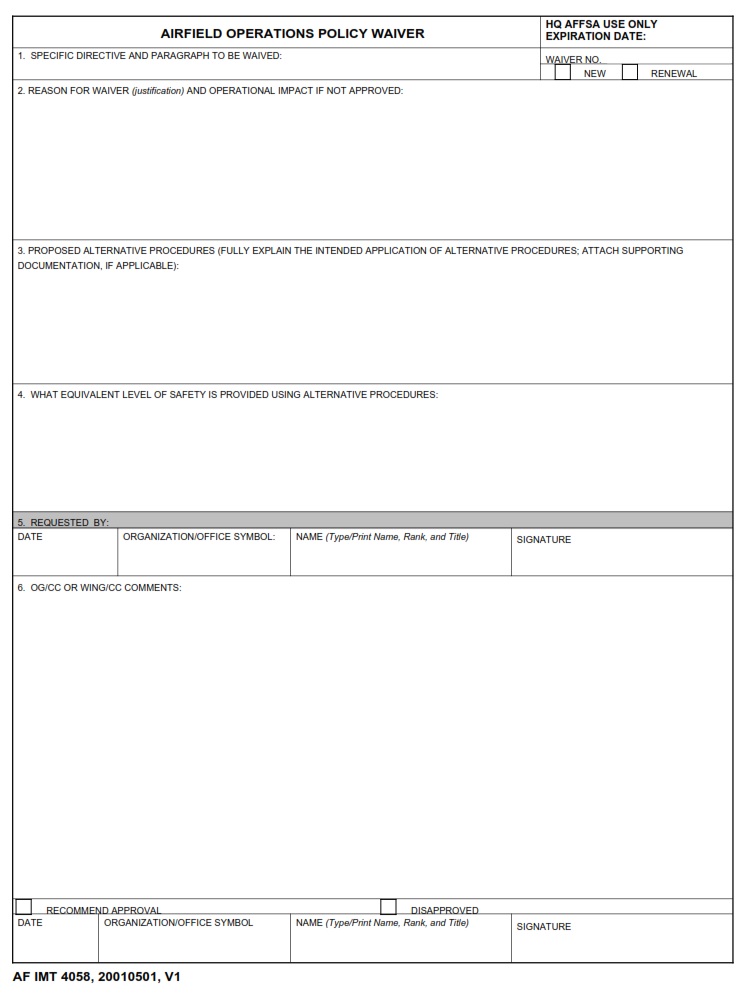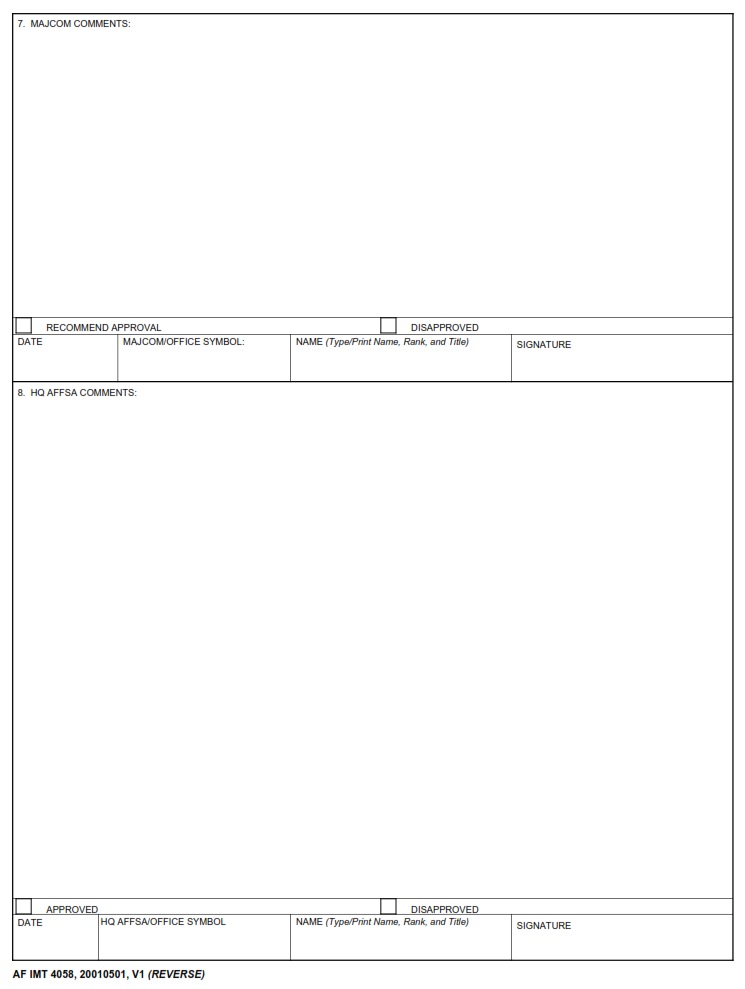AF-FORMS.COM – AF Form 4058 – Airfield Operations Policy Waiver – Are you ready to dive into the fascinating world of airfield operations policy waivers? Imagine a scenario where the standard rules and regulations governing airfield operations are temporarily set aside to accommodate unique circumstances. This is where AF Form 4058 comes into play, granting permission for deviations from the norm in order to ensure safe and efficient airfield operations. In this article, we will explore the intricacies of AF Form 4058 – Airfield Operations Policy Waiver, shedding light on its significance, implications, and the critical role it plays in maintaining operational flexibility while upholding safety standards. Whether you’re an aviation enthusiast or simply curious about how airfields adapt to changing needs, join us as we unravel the captivating world of policy waivers in airfield operations.
Download AF Form 4058 – Airfield Operations Policy Waiver
| Form Number | AF Form 4058 |
| Form Title | Airfield Operations Policy Waiver |
| Edition Date | 5/1/2001 |
| File Size | 33 KB |
AF-Form-4058-Airfield-Operations-Policy-Waiver.pdf (33 downloads )
What is an AF Form 4058?
The AF Form 4058, also known as the Airfield Operations Policy Waiver, is a critical document used in the United States Air Force to request exceptions or waivers to airfield operations policies. This form plays a pivotal role in ensuring the smooth functioning of airfield operations by providing a structured process for requesting and documenting policy waivers. It serves as a tool for commanders and operational personnel to assess, approve, and track deviations from standard airfield procedures, ultimately enhancing flexibility while maintaining safety and efficiency.
Moreover, the AF Form 4058 embodies the Air Force’s commitment to adaptability and responsiveness in dynamic operational environments. By enabling personnel to submit requests for waivers that are carefully evaluated against established policies and regulatory requirements, this form underscores the Air Force’s dedication to balancing operational needs with safety protocols. In essence, it represents an essential mechanism for fostering agile decision-making while upholding stringent standards within airfield operations.
Where Can I Find an AF Form 4058?
The AF Form 4058, also known as the Airfield Operations Policy Waiver, is a critical document for airfield operators and personnel in the United States Air Force. However, finding this form can be a challenging task for those who are not familiar with the military documentation process. Typically, you can find an AF Form 4058 through official military channels such as the Air Force e-Publishing website or by contacting your unit’s administrative office. Additionally, some bases may have physical copies available at specific locations, so it’s worth reaching out to local airfield operations personnel for assistance.
It’s important to note that access to the AF Form 4058 may be restricted to authorized personnel only due to its sensitive nature and potential impact on airfield operations. Therefore, individuals seeking this form should be prepared to provide proper identification and justification for their request. While locating the AF Form 4058 may require some persistence and patience, it plays a crucial role in ensuring compliance with established airfield policies and regulations.
AF Form 4058 – Airfield Operations Policy Waiver
In the world of airfield operations, the AF Form 4058, also known as the Airfield Operations Policy Waiver, holds significant importance. This form allows for the temporary deviation from standard operational procedures and policies in specific circumstances. It provides a structured process for requesting and approving waivers, ensuring that safety and efficiency are maintained despite any deviations from the norm.
Airfield Operations Policy Waivers are valuable tools that recognize the dynamic nature of airfield operations. They allow for flexibility in managing unforeseen situations while upholding safety as a top priority. By carefully evaluating each waiver request, airfield operators can adapt to unique challenges without compromising on regulatory compliance or putting personnel and aircraft at risk. Understanding this process sheds light on the intricate balance between adhering to operational policies and maintaining operational readiness in ever-changing environments.

